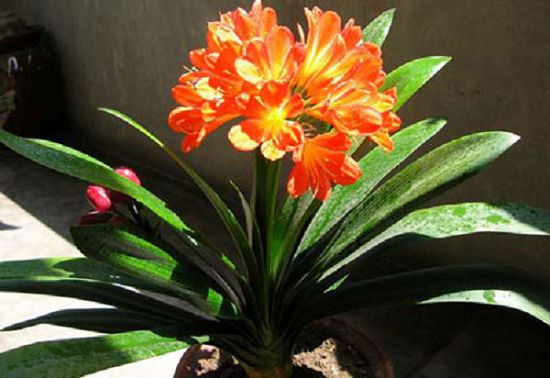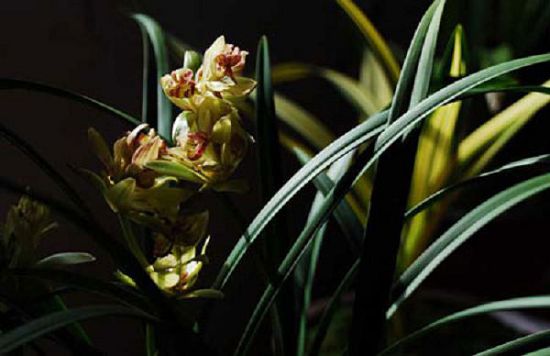What should I do if the leaves of Cymbidium turn yellow? Causes and solutions

Clivia is a perennial herb belonging to the genus Clivia of Amaryllidaceae. It is a semi-shade plant. It likes cool and avoids high temperature. The optimum temperature for growth is 15-25℃, and it stops growing below 5℃. It has high ornamental value. However, clivia in the growth process will also encounter trouble, clivia leaves yellow how to do, what is the reason?
Clivia leaves yellowing due to temperature problems
The suitable temperature for Clivia growth is 15~25℃. The temperature difference between day and night is 8~12℃, which is suitable for the growth of Clivia. Summer temperatures over 30℃ for a long time into semi-dormancy. At this time, if the air humidity is lower than 60%, the leaves of Clivia will become light yellow or even wilted; if the humidity is higher than 90%, the stems and leaves will grow long. In order to prevent these undesirable phenomena from occurring, measures should be taken to cool down, and then ventilation and light transmission should be carried out to control humidity. When the temperature drops below 8℃ in winter, Clivia basically stops growing. If the temperature drops below 6℃, freezing injury will occur, causing the leaf tip and leaf edge to turn green and yellow, and even yellow-white necrosis marks.
Clivia leaves yellowing due to humidity problems
Clivia is a humid plant, the growth environment humidity requirements are relatively high. Its optimum relative humidity range is 70%~80%. Clivia leaves in this humidity environment tender green, veins clear, leaves short, wide, neat, ornamental value. If the pot soil is too dry for a long time and the temperature is high, it is easy to make the leaves yellow. But long-term watering too much, but also easy to lead to hypoxia, hindered the normal respiration of plants, leading to Clivia root rot or even death.
Yellow leaves of Clivia caused by soil fertilizer
Clivia likes loose fertile sandy soil, soil hardening and insufficient fertilizer supply, which will make the leaves yellow and affect flowering. Generally, fertilization can be carried out in spring and autumn within one year. Rotten leaves must be fermented before they can be used. If they are not fermented, the roots will be burned easily. Clivia must be replaced once a year. Clivia maintenance site temperature above 25℃, it is necessary to lose weight or stop fertilizer, so as not to fertilize too much to burn the fleshy roots, if the temperature can be reduced to 20℃ below, can still be fertilized.
Yellowing of Clivia leaves caused by light discomfort
Clivia is a semi-positive flower, like weak scattered light, not resistant to strong light, light too strong easy to cause sunburn, light leaves from green to yellow, heavy leaves dehydration dry death. Short days in winter and spring are more conducive to flowering. Good illumination is an important condition to ensure that the gentleman orchid is big and colorful. However, if the light is too dark and the light is insufficient for a long time, it will also make the leaves lose luster, the old leaves are dark green, and the new leaves are thinned, yellow or yellow-green (shade yellow). At this point, clivia should be moved to a slightly stronger place or supplementary lighting. Clivia leaves have phototaxis, to light stocking, can maintain the lateral as a line, as a fan shape.
Clivia leaves yellowing due to air permeability
Clivia robust fleshy roots in the storage of sufficient water at the same time, but also for its survival of the soil put forward higher requirements. Only the nutrient soil with good air permeability, loose texture and rich humus is suitable for the growth of succulent roots of Clivia. Clivia placed too dense and the surrounding environment closed, are hindering air circulation, so that thin yellow plants thin. Therefore, indoor ventilation should be strengthened to avoid excessive density.
Related
- Is the orchid suitable for indoor use? Is it good for the body?
- How to prevent the empty root of orchids?
- What to do after the crab claw orchid is withered?
- Why are the leaves of orchids always yellow? Fertilizing and watering.
- Can the root of the gentleman orchid be saved if it is rotten?
- Diagnosis and treatment of cotton-blowing beetle insects in Cymbidium
- There is a way for a gentleman's orchid to rot.
- What is the most suitable temperature and humidity for the orchid?
- How to raise a gentleman's orchid? Cultivation techniques of Cymbidium
- How to prepare the nutritive soil for the cultivation of Cymbidium



